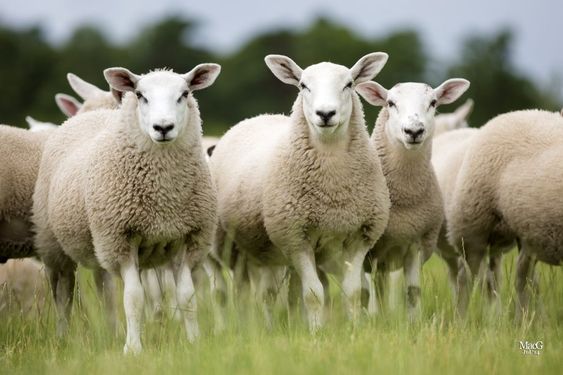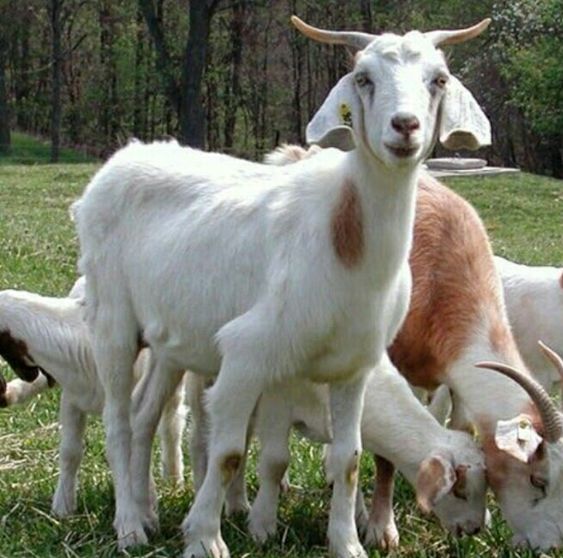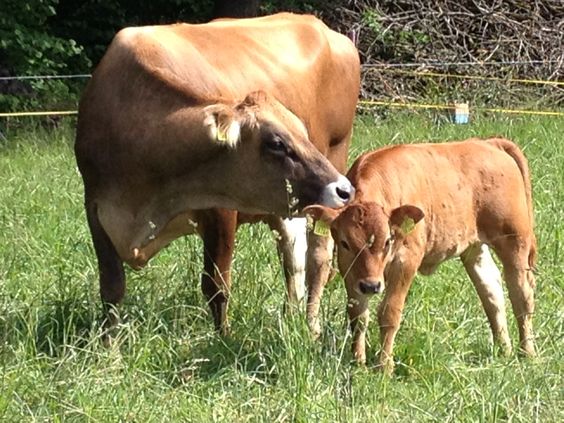Sheep Breeding: A Comprehensive Guide to Techniques, Benefits, and Future Trends
Sheep breeding has long been a cornerstone of agriculture, crucial for producing wool, meat, and dairy products. With its origins tracing back thousands of years, the practice of breeding sheep has evolved dramatically, integrating modern science and technology to enhance productivity and sustainability. This comprehensive guide delves into the intricacies of sheep breeding, exploring its principles, benefits, goals, innovative practices, and future directions.
The Fundamentals of Sheep Breeding
1. Sheep Breeding
Sheep breeding involves the intentional mating of sheep to improve specific traits in their offspring. This process aims to enhance characteristics such as growth rate, wool quality, disease resistance, and reproductive efficiency. Effective sheep breeding requires a thorough understanding of genetics, animal husbandry, and market demands.
2. Breeding Goals
The goals of sheep breeding programs are diverse and depend on the intended purpose of the sheep enterprise. Here are some of the primary objectives:
- Meat Production: Breeding for meat involves selecting sheep with high growth rates, optimal fat and muscle distribution, and desirable meat quality. Breeds like the Suffolk and Texel are renowned for their meat production capabilities.
- Wool Production: Wool quality is crucial for the textile industry. Breeders aim to produce sheep with fine, strong, and abundant wool. The Merino breed is particularly valued for its high-quality wool.
- Dairy Production: Sheep bred for dairy purposes focus on higher milk yields and better milk composition. Breeds like the East Friesian are known for their prolific milk production.
- Dual-Purpose Breeds: Some sheep breeds are valued for both meat and wool or milk. The Dorset and Polypay are examples of dual-purpose breeds that offer versatility.
3. Breeding Methods
Several breeding methods are employed to achieve specific objectives:
- Selective Breeding: This method involves choosing sheep with desirable traits to mate, gradually improving the breed over generations. Selective breeding requires careful record-keeping and an understanding of genetic principles.
- Crossbreeding: By mating different breeds, crossbreeding aims to combine the best traits of each parent. This approach can enhance vigor and produce hybrid offspring with improved traits. For example, crossing a Merino with a Suffolk can yield sheep with both fine wool and excellent meat quality.
- Inbreeding: Inbreeding involves mating closely related sheep to fix certain traits. While it can be useful for maintaining specific characteristics, it can also lead to reduced genetic diversity and potential health issues if not managed properly.

Benefits of Sheep Breeding
1. Improved Meat Quality
Breeding programs focused on meat quality result in sheep with better muscle development, optimal fat content, and superior flavor. For instance, breeds like the Angus and Charolais are known for their high-quality meat. Improved meat quality not only enhances consumer satisfaction but also commands higher market prices.
2. Enhanced Wool Production
Sheep breeding for wool can lead to finer, stronger, and more abundant wool, which is highly valued in the textile industry. For example, Merino wool is prized for its softness and durability. Enhanced wool production can lead to better pricing and increased profitability for wool producers.
3. Disease Resistance
Selective breeding can enhance a flock’s resistance to common diseases and parasites. For instance, breeding sheep for greater resistance to footrot or internal parasites can reduce veterinary costs and improve flock health. This leads to a more robust and productive herd.
4. Increased Reproductive Efficiency
Effective breeding programs can improve reproductive rates, resulting in more lambs born per ewe. Enhanced reproductive efficiency reduces the time between lambing and improves lamb survival rates. This efficiency translates into more productive and profitable operations.
5. Adaptability to Environmental Conditions
Breeding sheep that are well-suited to specific environmental conditions can enhance their resilience and productivity. For example, breeds like the Katahdin are known for their adaptability to hot and humid climates, while the Romney excels in cooler, wetter environments.
Goals of Sheep Breeding Programs
1. Maximizing Production Efficiency
Production efficiency is a primary goal of sheep breeding. This involves increasing the yield of meat, wool, or milk per sheep and optimizing feed conversion ratios. Efficient production practices help reduce costs and improve profitability.
2. Enhancing Genetic Diversity
Maintaining genetic diversity is essential for the long-term health and productivity of sheep populations. Breeding programs must balance selective breeding with the preservation of genetic variation to prevent issues related to inbreeding, such as reduced fertility and increased susceptibility to diseases.
3. Improving Animal Welfare
Modern breeding programs prioritize animal welfare by selecting for traits that promote health, comfort, and longevity. This includes reducing susceptibility to diseases, improving lambing ease, and ensuring overall well-being. Breeding for traits like good temperament and ease of handling also contributes to better animal welfare.
4. Sustainable Practices
Sustainability is a growing focus in sheep breeding. Sustainable practices aim to minimize the environmental impact of sheep farming by selecting breeds that are more resource-efficient, reducing greenhouse gas emissions, and promoting soil health. Implementing rotational grazing and other sustainable practices also supports ecological balance.
5. Economic Viability
Economic viability is a crucial aspect of breeding programs. By improving productivity, reducing costs, and enhancing product quality, breeding programs contribute to the financial success of sheep farming. This includes optimizing feed efficiency, reducing veterinary expenses, and achieving better market prices for products.
Innovative Ideas in Sheep Breeding
1. Genetic Testing and Data Analysis
Advancements in genetic testing and data analysis have revolutionized sheep breeding. Tools like genomic selection allow breeders to make more informed decisions by analyzing DNA to identify desirable traits. This leads to faster and more accurate improvements in breeding programs.
2. Precision Breeding
Precision breeding involves using detailed data on individual sheep to make targeted breeding decisions. By leveraging information on genetics, health, and performance, breeders can enhance specific traits with greater accuracy. This approach ensures that breeding efforts are aligned with production goals and can lead to significant improvements in flock performance.
3. Use of Technology in Monitoring
Technological innovations, such as wearable sensors and automated monitoring systems, provide real-time data on sheep health and performance. These technologies help track vital signs, activity levels, and reproductive status, allowing for timely interventions and informed breeding decisions. For example, smart collars can monitor rumination and activity patterns, offering insights into sheep health and productivity.
4. Sustainable Breeding Practices
Sustainable breeding practices aim to reduce the environmental impact of sheep farming. This includes selecting breeds that are more efficient in their use of resources, such as feed and water, and implementing practices that promote soil health and biodiversity. For example, breeding for traits that improve feed efficiency can reduce the overall feed requirement, lowering environmental impact.
5. Breeding for Climate Resilience
As climate change impacts agricultural practices, breeding programs are focusing on developing sheep that can withstand extreme weather conditions and adapt to changing climates. This includes selecting for traits such as heat tolerance, drought resistance, and improved resilience to climate-related stresses.
Topic Suggestions for Further Exploration
1. The Role of Genetic Diversity in Sheep Breeding
Investigate how genetic diversity affects the health, productivity, and resilience of sheep flocks. Explore strategies for maintaining genetic variation and preventing the negative effects of inbreeding.
2. Economic Impact of Modern Sheep Breeding Techniques
Analyze the financial benefits and challenges associated with modern breeding techniques, including the use of genetic testing, precision breeding, and technological innovations. Assess how these methods contribute to the economic success of sheep farming.
3. Comparative Analysis of Breeding Methods
Compare the effectiveness of various breeding methods, such as selective breeding, crossbreeding, and inbreeding, in achieving specific breeding goals. Evaluate their advantages, limitations, and impact on flock performance.
4. Case Studies of Successful Sheep Breeding Programs
Examine real-world examples of successful sheep breeding programs and the lessons learned from them. Highlight best practices, innovative approaches, and outcomes that have contributed to their success.
5. The Future of Sheep Breeding: Trends and Innovations
Explore emerging trends and technologies shaping the future of sheep breeding. Discuss potential impacts on productivity, sustainability, and animal welfare, and consider how breeders can adapt to evolving challenges and opportunities.
Advantages of Modern Sheep Breeding
1. Enhanced Productivity
Modern sheep breeding techniques lead to higher productivity in terms of meat, wool, and milk. By focusing on specific traits and using advanced technologies, breeders can achieve significant improvements in output and efficiency.
2. Improved Quality of Products
Breeding for specific traits results in higher-quality meat, wool, and milk. For example, finer wool with better fiber characteristics and meat with optimal marbling and flavor enhance the value of sheep products and can command premium prices in the market.
3. Reduced Environmental Impact
Modern breeding practices aim to reduce the environmental footprint of sheep farming. This includes selecting for breeds that are more efficient in their use of resources, implementing sustainable practices, and reducing greenhouse gas emissions. For instance, breeding for improved feed efficiency can lower the overall feed requirement, contributing to reduced environmental impact.
4. Better Animal Welfare
Modern breeding programs prioritize animal welfare by selecting for traits that enhance health, comfort, and overall well-being. This includes reducing susceptibility to diseases, improving lambing ease, and ensuring good temperament. Breeding for ease of handling and better health also contributes to a more humane and ethical approach to sheep farming.
5. Increased Economic Benefits
Effective breeding programs contribute to the economic success of sheep farming by improving productivity, reducing costs, and enhancing product quality. By achieving better market prices for high-quality products and optimizing production practices, breeders can enhance profitability and financial stability.

Challenges in Sheep Breeding
1. Genetic Disorders
Genetic disorders can pose significant challenges in sheep breeding. Conditions such as Scrapie, a fatal neurodegenerative disease, and other genetic issues can affect flock health and productivity.
- Solution: Implementing genetic screening and selecting for resistance or tolerance to known genetic disorders can help mitigate these challenges. Regular health monitoring and maintaining genetic diversity are also essential.
2. Inbreeding Depression
Inbreeding depression occurs when closely related animals are bred, leading to a reduction in genetic diversity and potential health issues.
- Solution: To combat inbreeding depression, breeders should use pedigree analysis and genetic testing to avoid mating closely related individuals. Incorporating new genetic material through outside breeding can also help maintain diversity.
3. Environmental and Climatic Challenges
Sheep breeding programs must address environmental and climatic challenges, such as extreme temperatures, drought, and changing weather patterns. Breeds that are not well-suited to local conditions may struggle to thrive.
- Solution: Breeding for adaptability to specific environmental conditions can help address these challenges. Selecting for traits such as heat tolerance, drought resistance, and disease resilience can enhance flock performance in varying climates.
4. Economic Pressures
Economic pressures, including fluctuating market prices and input costs, can impact the feasibility of sheep breeding programs.
- Solution: Breeding programs should focus on improving productivity and cost-efficiency to enhance profitability. Diversifying income sources and exploring value-added products can also help mitigate economic challenges.
breeding is a dynamic and essential component of modern agriculture, offering numerous benefits and opportunities for improvement. By understanding the fundamentals of breeding, setting clear goals, and embracing innovative practices, producers can enhance the productivity, quality, and sustainability of their sheep farming operations. As technology and research continue to advance, the future of sheep breeding promises even greater achievements, contributing to a more efficient, sustainable, and profitable agricultural sector. The integration of genetic advancements, sustainable practices, and technological innovations will shape the future of sheep breeding, ensuring its continued relevance and success in the evolving landscape of agriculture.






